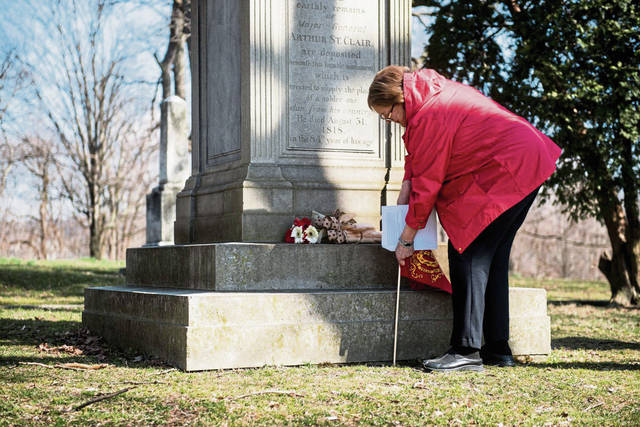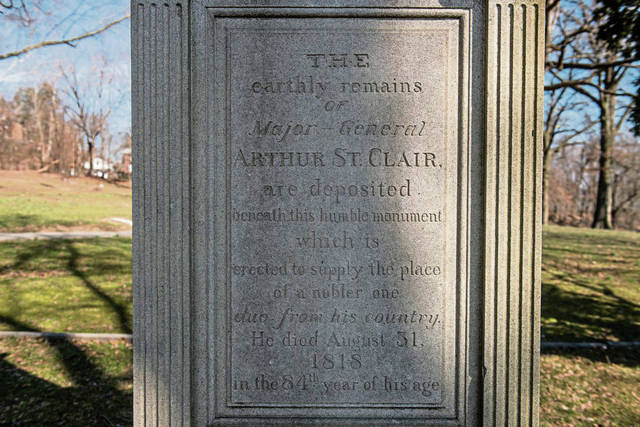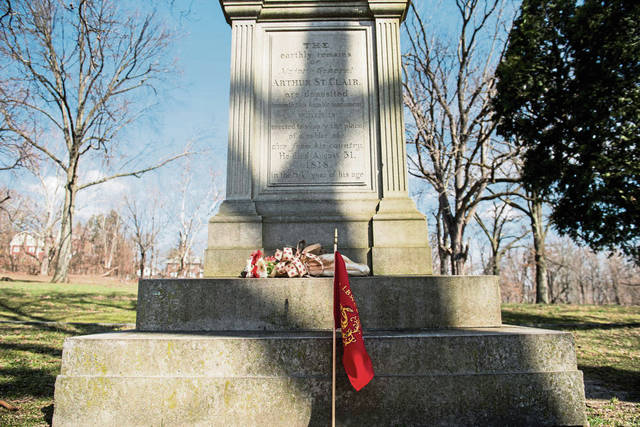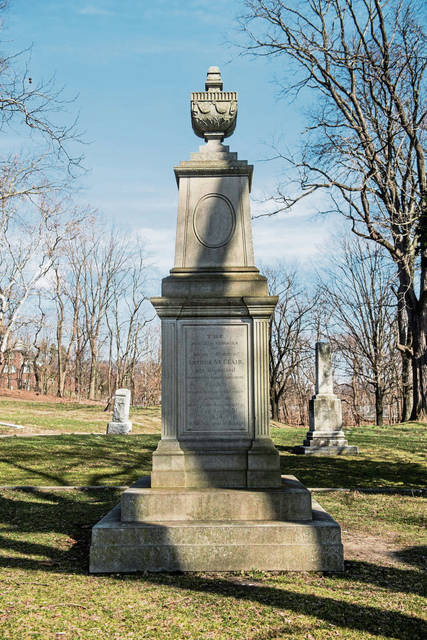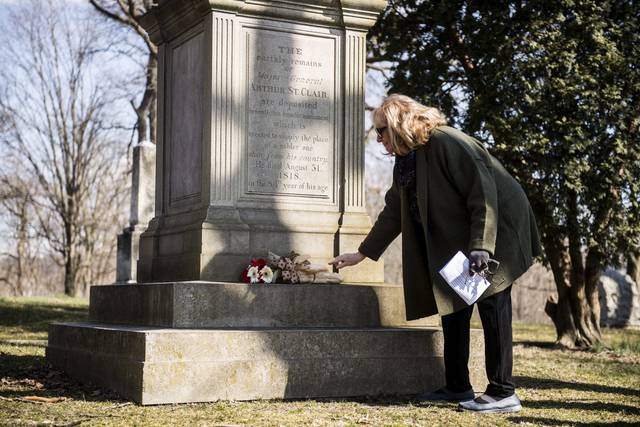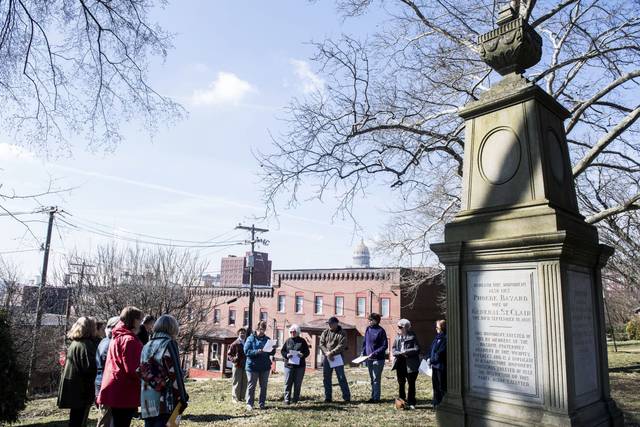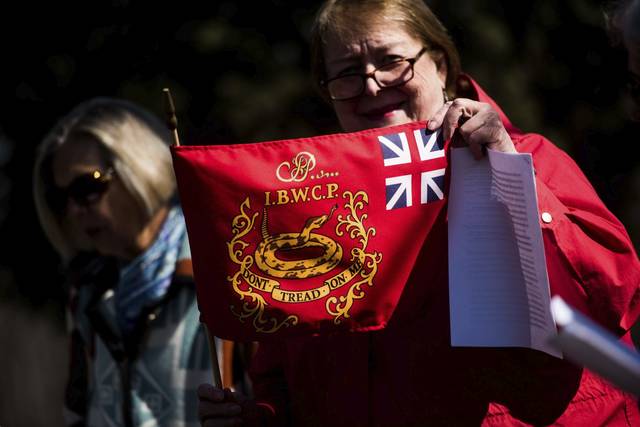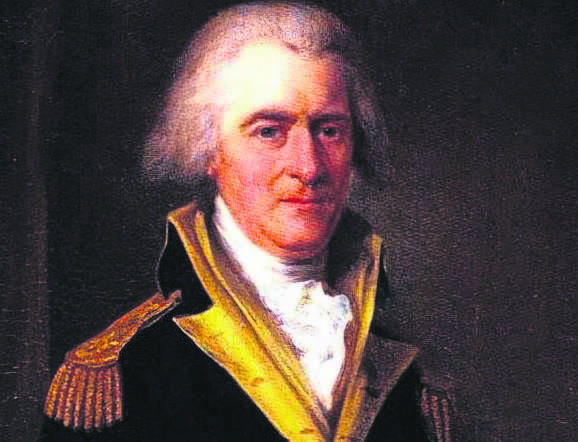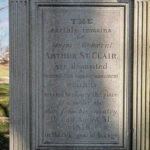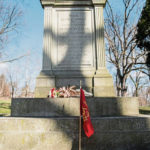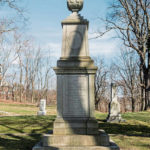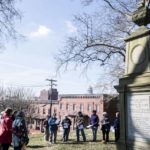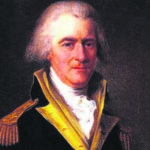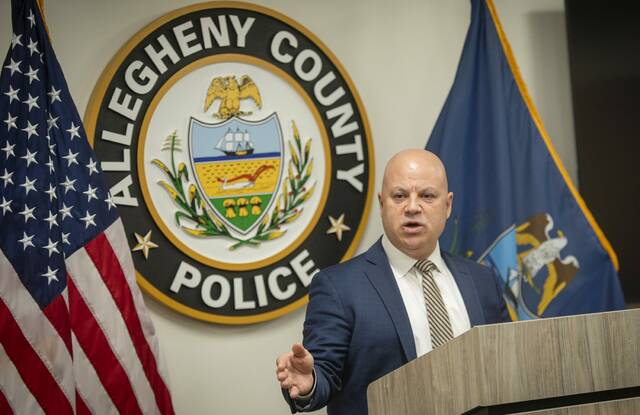Some Founding Fathers get no respect, but for Arthur St. Clair, that’s changing.
Last year marked the 200th anniversary of his death, and Tuesday, members of the Westmoreland Historical Society gathered to commemorate his 282nd birthday (March 23).
The St. Clair admirers formed a semi-circle around the ornate tombstone where St. Clair and his wife, Phoebe Bayard, are buried and placed flowers and a Westmoreland County flag at its base. In the Greensburg park that bears his name, they also read a short summary of his life and the Hanna’s Town Resolves that St. Clair helped draft.
“Not a lot is known about his early life, and I think that’s why biographers had a hard time writing about him when they were writing about all the other Founding Fathers. They just didn’t know much about him,” said Lisa Hays, Westmoreland Historical Society executive director.
“We’re learning more because it’s easier to research now, so we have some insight into what his gifts were and what his challenges were,” Hays said.
The Hanna’s Town Resolves, a precursor to the Declaration of Independence, show the British colonists in America to be loyal yet dissatisfied with British rule. “They weren’t quite ready to declare independence in 1775,” Hays said.
St. Clair went through his own gradual transition from loyalty to the British crown, as an ensign in the British Army and an official in Westmoreland County, to a leader of the American Revolution as major general in the Continental Army.
“Arthur St. Clair went that route, as did George Washington and other Founding Fathers — once loyal to Great Britain and now, ‘We need to fight for independence,’ ” Hays said.
Caretaker of the decommissioned Fort Ligonier in the late 1760s, St. Clair served as justice for the area that would become Westmoreland County and was the first prothonotary and clerk of courts when Westmoreland was carved out of Bedford County in 1773.
Following the Revolutionary War, St. Clair served as president of the Continental Congress, preceding Washington as head of the new American government, and governor of the Northwest Territory.
President Thomas Jefferson removed him from the latter position in 1802, whereupon St. Clair returned to Westmoreland County and settled near Ligonier.
An article about St. Clair’s early years will appear in the next issue of Westmoreland History magazine.



